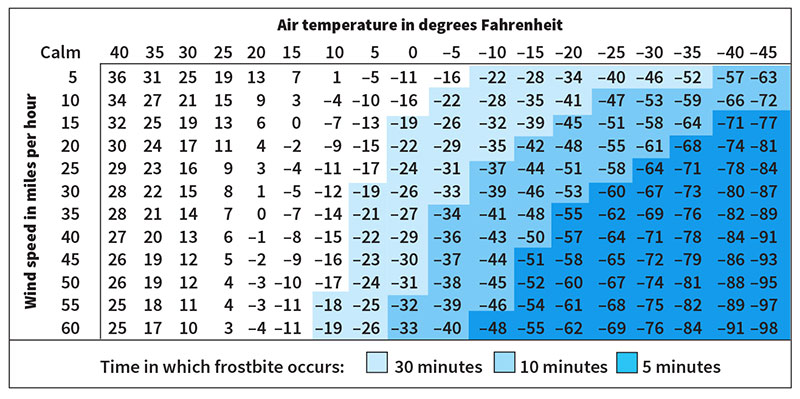Wind chill is a measure of how cold air cools the human body when the wind blows. Wind chill accounts for the fact that wind cools the body more effectively than still air does. The scientific term for wind chill is wind chill equivalent temperature. People also refer to it as the wind chill index.

In places that have low temperatures during winter, many weather reports include the wind chill. Reporting the wind chill helps people who plan to go outdoors judge the cooling effect of the air. For example, when the air temperature is 10 °F and the wind is blowing at 10 miles per hour (mph), the wind chill is –4 °F. Exposed skin will lose heat at the same rate as it would if the temperature were –4 °F and the air were motionless.
Wind chill cannot measure the body’s heat loss precisely because it does not account for certain important factors. One such factor is body build. A person who is thinner than normal will lose more heat and feel colder than a stocky person.
The original wind chill measurements were based on experiments performed in Antarctica in the 1940’s by the American explorers Paul A. Siple and Charles F. Passel. Siple and Passel measured the time required for 8.8 ounces (250 grams) of water in a plastic cylinder to freeze under various conditions of wind and temperature. Scientists used equations based on the experiments to create wind chill charts.
In the winter of 2001-2002, the National Weather Service of the United States and the Meteorological Services of Canada began to use new equations. Those equations are based on advances in scientific knowledge. They provide a more accurate measure of heat loss from the human face—the part of the body most often exposed to outdoor air during the winter.
